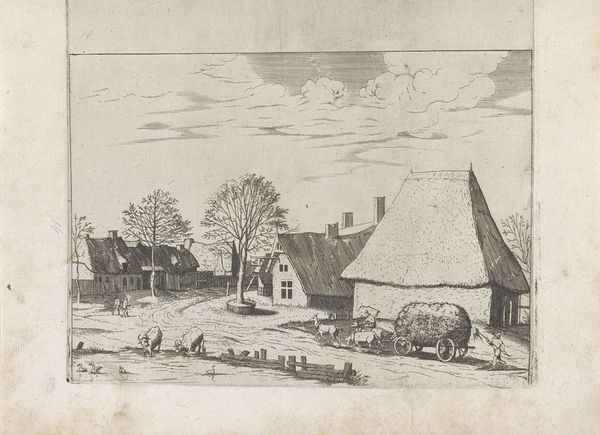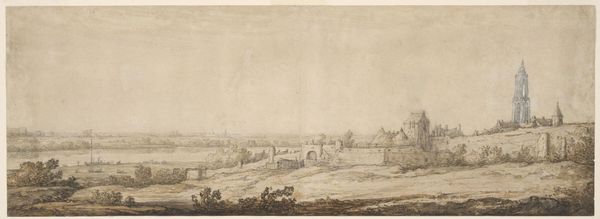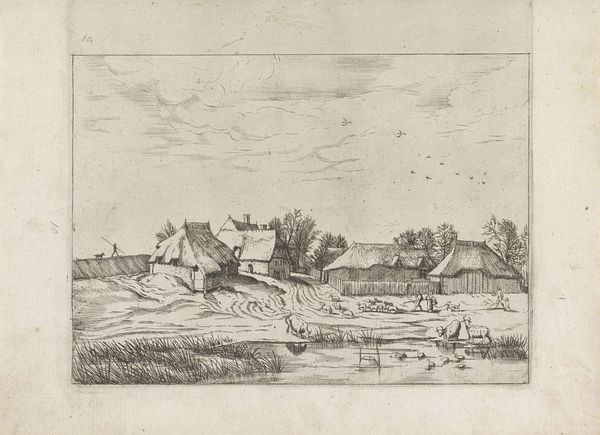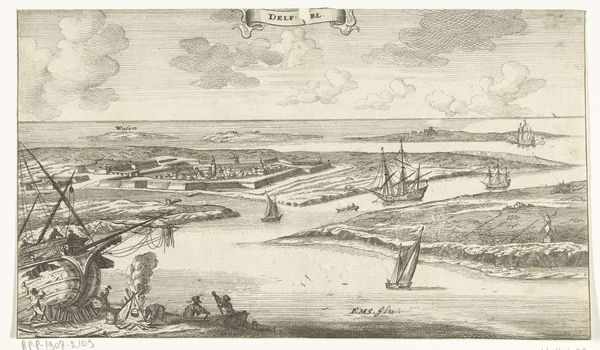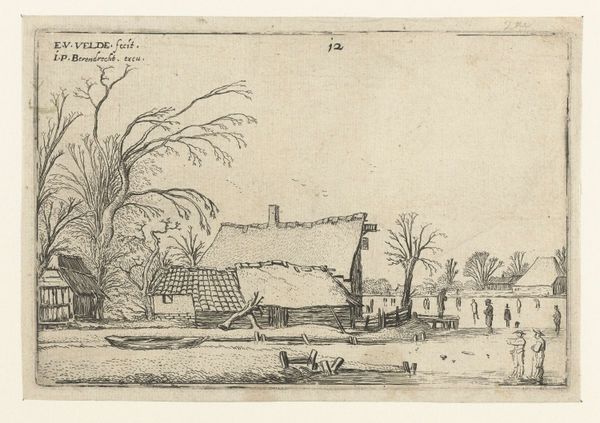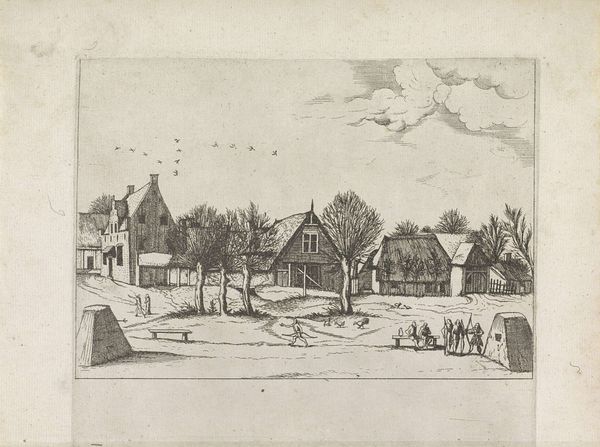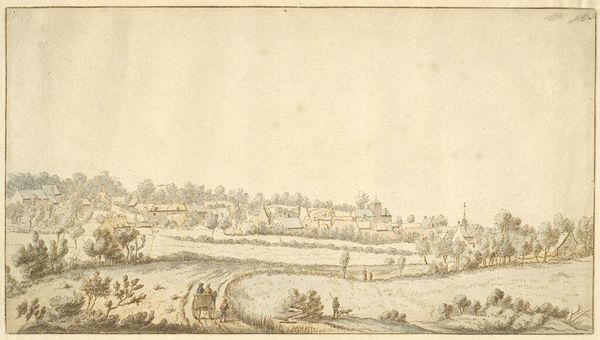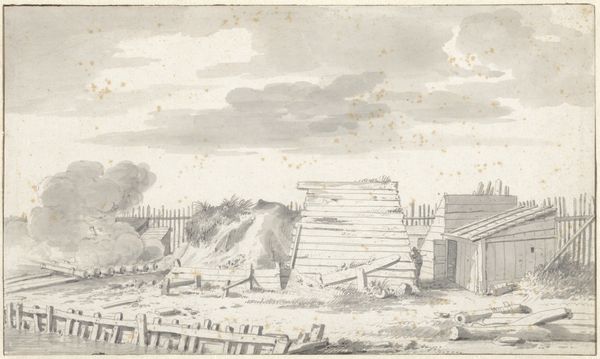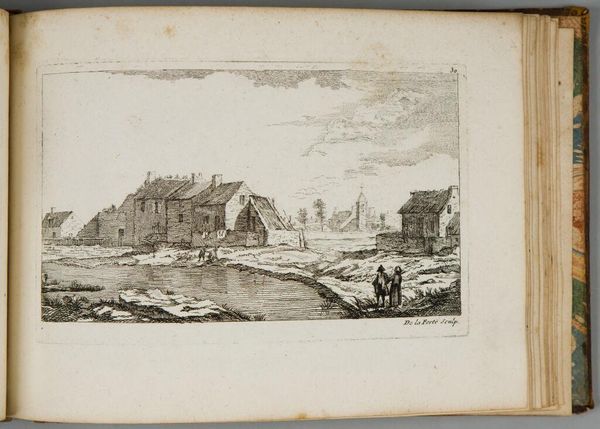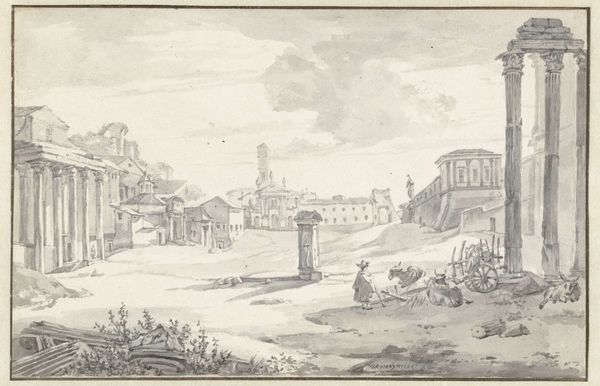
Ruïnes van de drie uitgebrande lijnbanen op de schans aan de Smallepadsgracht, 1680 1680 - 1690
0:00
0:00
janvanderheyden
Rijksmuseum
print, etching, engraving
#
dutch-golden-age
# print
#
etching
#
landscape
#
cityscape
#
history-painting
#
engraving
#
realism
Dimensions: height 202 mm, width 320 mm
Copyright: Rijks Museum: Open Domain
Jan van der Heyden’s 1680 pen drawing depicts the ruins of the burnt ropewalks on the rampart at Smallepadsgracht. Here, the motif of ruins speaks to the inevitable decay and transformation inherent in all human constructions. Notice the stark contrast between the destroyed buildings and the windmills in the background. The windmill, a symbol of human ingenuity, becomes an indifferent observer of the destruction below. This juxtaposition echoes across time— from the ruins of ancient Rome serving as a backdrop for Renaissance innovation, to modern cities rising from the ashes of war. Fire, a powerful force of destruction, has always held a dual significance: it destroys, but also cleanses and makes way for new beginnings. This cyclical notion of destruction and rebirth reflects humanity's constant struggle to rebuild and innovate, a theme that continues to resonate deeply within our collective memory.
Comments
No comments
Be the first to comment and join the conversation on the ultimate creative platform.
